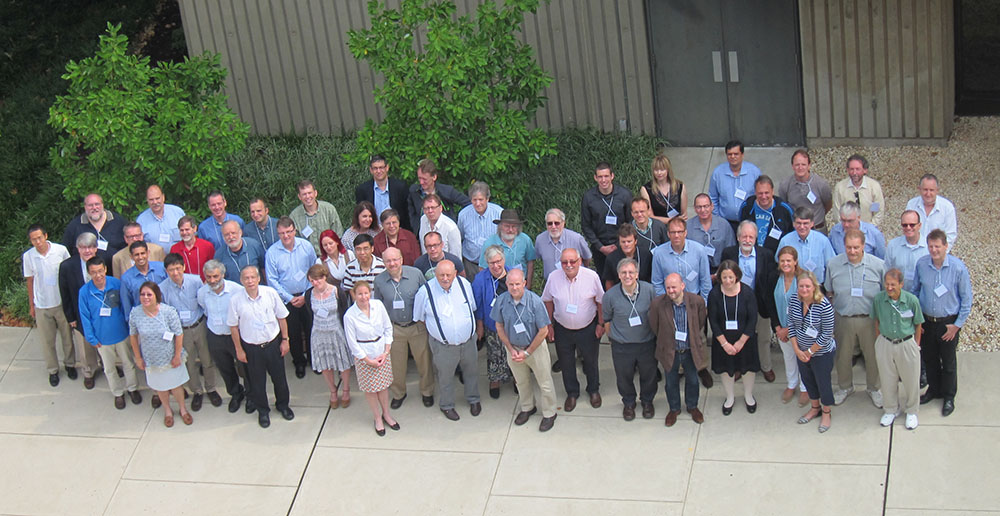DCC: a Swiss army knife for structure factor analysis and validation
H. Yang, E. Peisach, J. D. Westbrook, J. Young, H. M. Berman and S. K. Burley
J. Appl. Cryst. (2016). 49 doi: 10.1107/S1600576716004428
DCC is a wrapper for third-party software packages to aid in structure factor analysis and validation. As the results are recorded in PDBx/mmCIF format, the output from DCC can be used in automatic data pipelines.
The program can be downloaded from sw-tools.rcsb.org.
The inaugural ligand validation meeting brought co-crystal structure determination experts from academe and industry together with X-ray Crystallography and Computational Chemistry software developers to discuss and develop best practices for validation of co-crystal structures; editorial/refereeing standards for publishing co-crystal structures; and recommendations for ligand representation across the archive.
These recommendations have been published:
P. D. Adams, K. Aertgeerts, C. Bauer, J. A. Bell, H. M. Berman, T. N. Bhat, J. M. Blaney, E. Bolton, G. Bricogne, D. Brown, S. K. Burley, D. A. Case, K. L. Clark, T. Darden, P. Emsley, V. A. Feher, Z. Feng, C. R. Groom, S. F. Harris, J. Hendle, T. Holder, A. Joachimiak, G. J. Kleywegt, T. Krojer, J. Marcotrigiano, A. E. Mark, J. L. Markley, M. Miller, W. Minor, G. T. Montelione, G. Murshudov, A. Nakagawa, H. Nakamura, A. Nicholls, M. Nicklaus, R. T. Nolte, A. K. Padyana, C. E. Peishoff, S. Pieniazek, R. J. Read, C. Shao, S. Sheriff, O. Smart, S. Soisson, J. Spurlino, T. Stouch, R. Svobodova, W. Tempel, T. C. Terwilliger, D. Tronrud, S. Velankar, S. C. Ward, G. L. Warren, J. D. Westbrook, P. Williams, H. Yang, J. Young
Outcome of the First wwPDB/CCDC/D3R Ligand Validation Workshop
(2016) Structure 24: 502508 doi: 10.1016/j.str.2016.02.017

The participants of the inaugural ligand validation meeting on July 30-31, 2015 in Piscataway, NJ
Effective May 8th 2016, depositors submitting PDB data will have the option to suppress the entry's author list and title prior PDB depositors can help the structure modeling community test prediction methods by making protein sequences available while the structure is on hold. To designate your structure as a CASP target, use the Release Status page during deposition. Ideal candidates would have a sequence identity to available structures below 50% or are otherwise interesting for prediction.
Once an entry is flagged as a CASP target, the sequence will be released immediately for target prediction and the entry will be automatically held for 8 weeks. Visit CASP for more information at http://www.predictioncenter.org/casp12/index.cgi.
Since May 25, 2016, new deposition sessions are directed to the wwPDB partner site designated for processing: Europe and Africa→PDBe/UK; Asia and the Middle East→PDBj/Japan; and Americas, Australia, and Oceania→RCSB PDB/US. This new arrangement will help to ensure faster response times for communications and balanced distribution of the data curation load among the wwPDB partner sites.
At the start of a new session at any of the three wwPDB partner sites (http://deposit.wwpdb.org, http://deposit-pdbe.wwpdb.org, http://deposit-pdbj.wwpdb.org), depositors will select from a pull down list the country corresponding to the location of PI's institution. Doing so will automatically direct the deposition session to the appropriate wwPDB partner site.
Deposition statistics, including the number of PDB depositions by depositor location (the location of PI's institution), are available at http://wwpdb.org/stats/deposition.
In the second quarter of 2016, 2950 experimentally-determined structure coordinate entries were deposited to the archive.
86.6% were deposited with a release status of hold until publication; 8.8% were released as soon as annotation of the entry was complete; and 4.6% were held until a particular date.
91.8% of these entries were determined by X-ray crystallographic methods; 4.6% were determined by NMR methods.
During the same period, 2650 structures and 260 EMDB maps were released in the PDB.